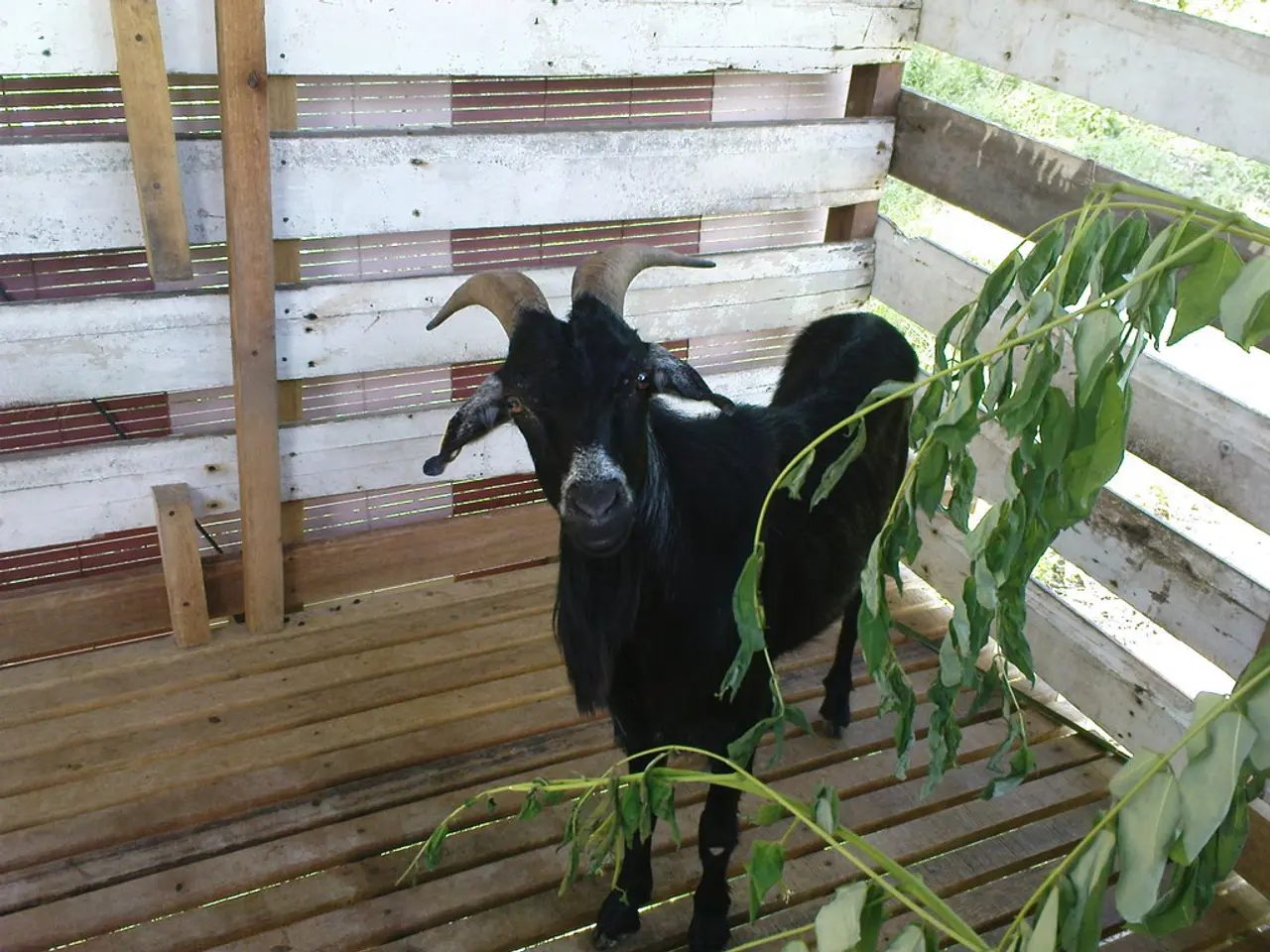Observed Unexpected Scene: 600 Goats Spotted on a Hill After Turning a Corner
Goats Take Center Stage in Wildfire Prevention Efforts in Contra Costa County, California
In a unique and effective approach to wildfire prevention, large herds of goats are being utilized for targeted grazing in Contra Costa County, California. This natural strategy is playing a significant role in the county's fire mitigation efforts, particularly in its wildfire-prone regions.
The East Bay Regional Park District (EBRPD) is at the forefront of this initiative, spending $500,000 per year on goat herds for grazing over 86,800 acres of parkland. Professional outfits like Goats R Us and Star Creek Land Stewards are contracted to manage these goats, much of the grazing taking place within Contra Costa and Alameda counties.
- Fuel Load Reduction
Goats consume dry grasses, weeds, shrubs, and other types of vegetation that serve as potential fuel for wildfires. By reducing this vegetation, goats help lower the risk and intensity of wildfires.
- Environmentally Friendly Management
Unlike mechanical clearing or herbicides, goats offer an eco-friendly way to manage vegetation. They minimize soil disturbance and reduce the need for potentially harmful chemicals.
- Access to Difficult Terrain
Goats can graze on steep, rocky, or uneven lands that are difficult or dangerous for human crews or machinery to access, making them highly effective for managing wildfire-prone areas in rugged landscapes.
- Cost-Effectiveness
Using goats can be more cost-efficient over time compared to mechanical clearing and labor, especially for ongoing vegetation management in large or hard-to-reach areas.
- Supporting Local Ecosystems
Goat grazing can help restore natural fire breaks, promote native plant growth by reducing invasive species, and maintain healthier ecosystems that are more resilient to wildfire.
These goats, often numbering between 200-600 animals, are not just cute photo-ops but frontline firefighters with hooves. They are adept at climbing dangerous and inaccessible hills and can be considered as "perfect little lawn mowing machines." On recent projects, approximately 600 goats were brought in at a time to strip hillsides of dry grass and brush.
The benefits of goats in fire prevention include reducing fire risk and providing a safe foothold for firefighters. Goats' grazing leaves a closely cropped carpet on the hillside, buying precious minutes for fire prevention. Each goat eats up to eight pounds of vegetation daily, turning waist-high weeds into ankle-high stubble that slows flames and gives firefighters a safe foothold.
Moreover, goats are experts at eating tricky plants like poison oak. They naturally till the ground and fertilize it naturally, contributing to the overall health of the land.
Goats are preferred over machines for fire safety because machines can throw off sparks that can start wildfires, which is counterproductive in reducing fire risk. Private landowners, such as commercial orchards, vineyards, and ranches, increasingly book herds when steep terrain makes mowing dangerous or impossible. Fire agencies, local cities, and homeowner associations in Contra Costa County also hire goats to trim defensible space along wildland-urban edges.
In conclusion, goat grazing is a strategic part of fire mitigation efforts in Contra Costa County, California. This natural and effective wildfire prevention strategy helps protect communities, reduce fire hazards, and support sustainable land management.
- Given the wildfire-prone regions in Contra Costa County, scientific studies on environmental science, particularly the impact of goat grazing on wildfire prevention, are likely to be beneficial in further promoting this method.
- To create a more fire-resistant lifestyle, homeowners can consider incorporating outdoor-living practices, such as maintaining a well-tended home-and-garden to prevent excessive vegetation, which could serve as wildfire fuel.
- Local environmental-science clubs or organizations could organize events that raise awareness about climate-change and sustainable lifestyle choices, emphasizing the importance of goat grazing for wildfire prevention in outdoor-living spaces and home-and-garden areas.





